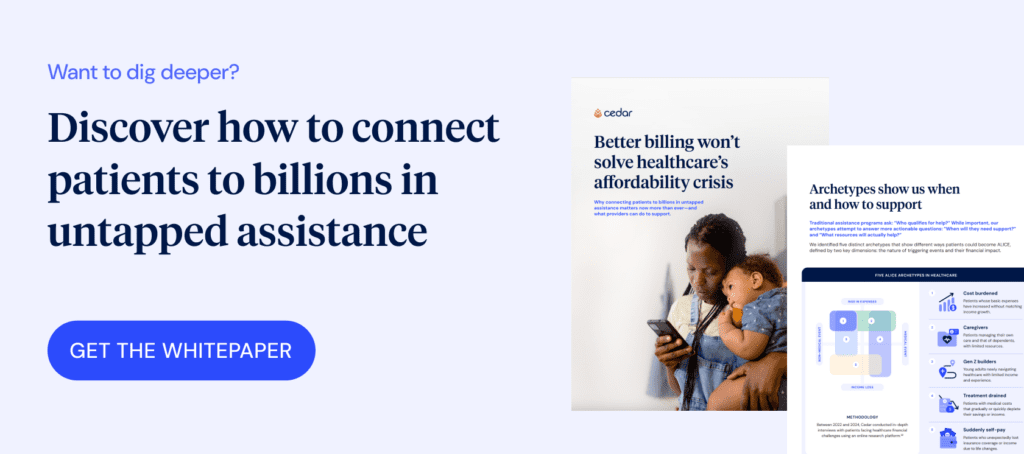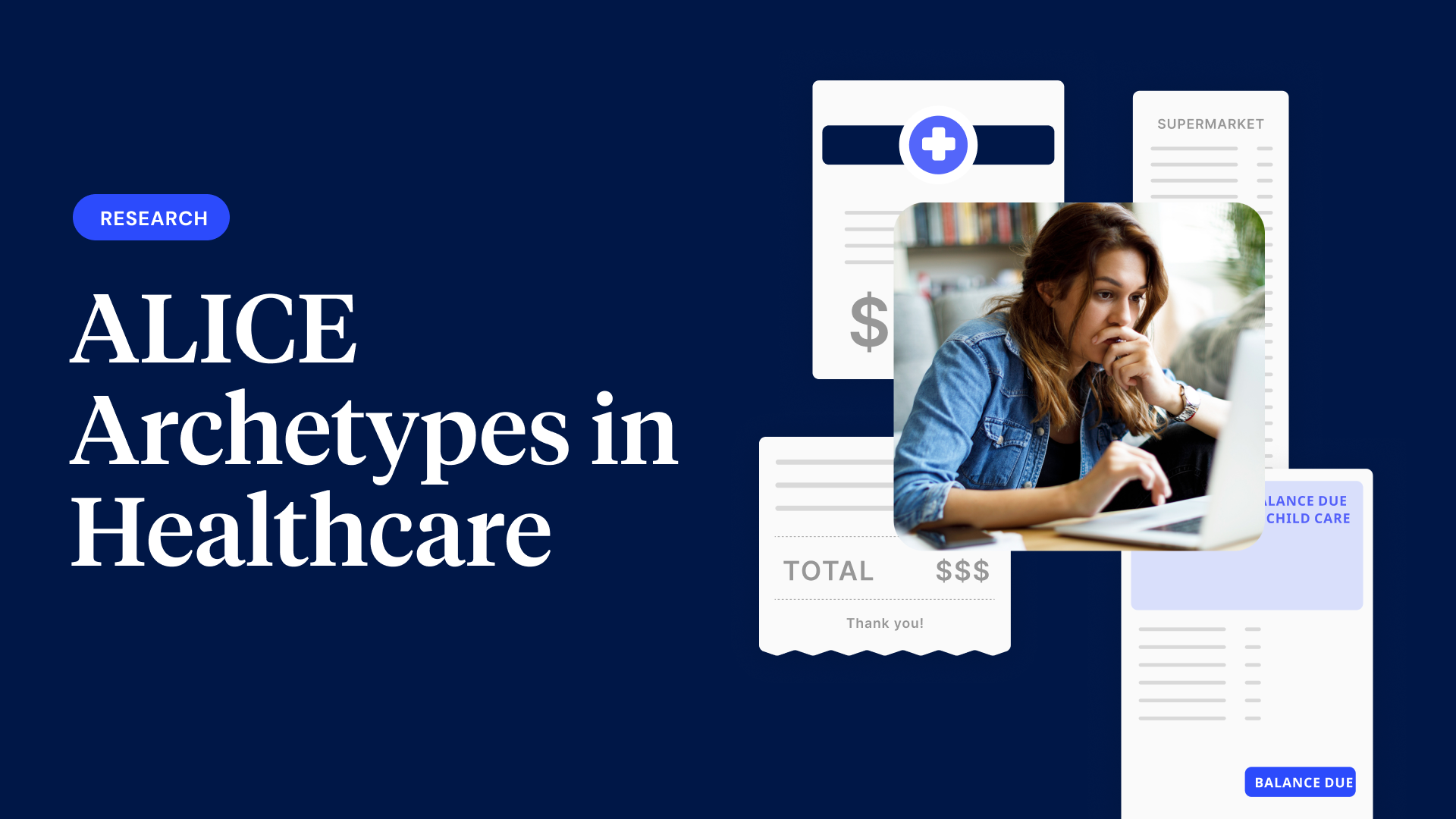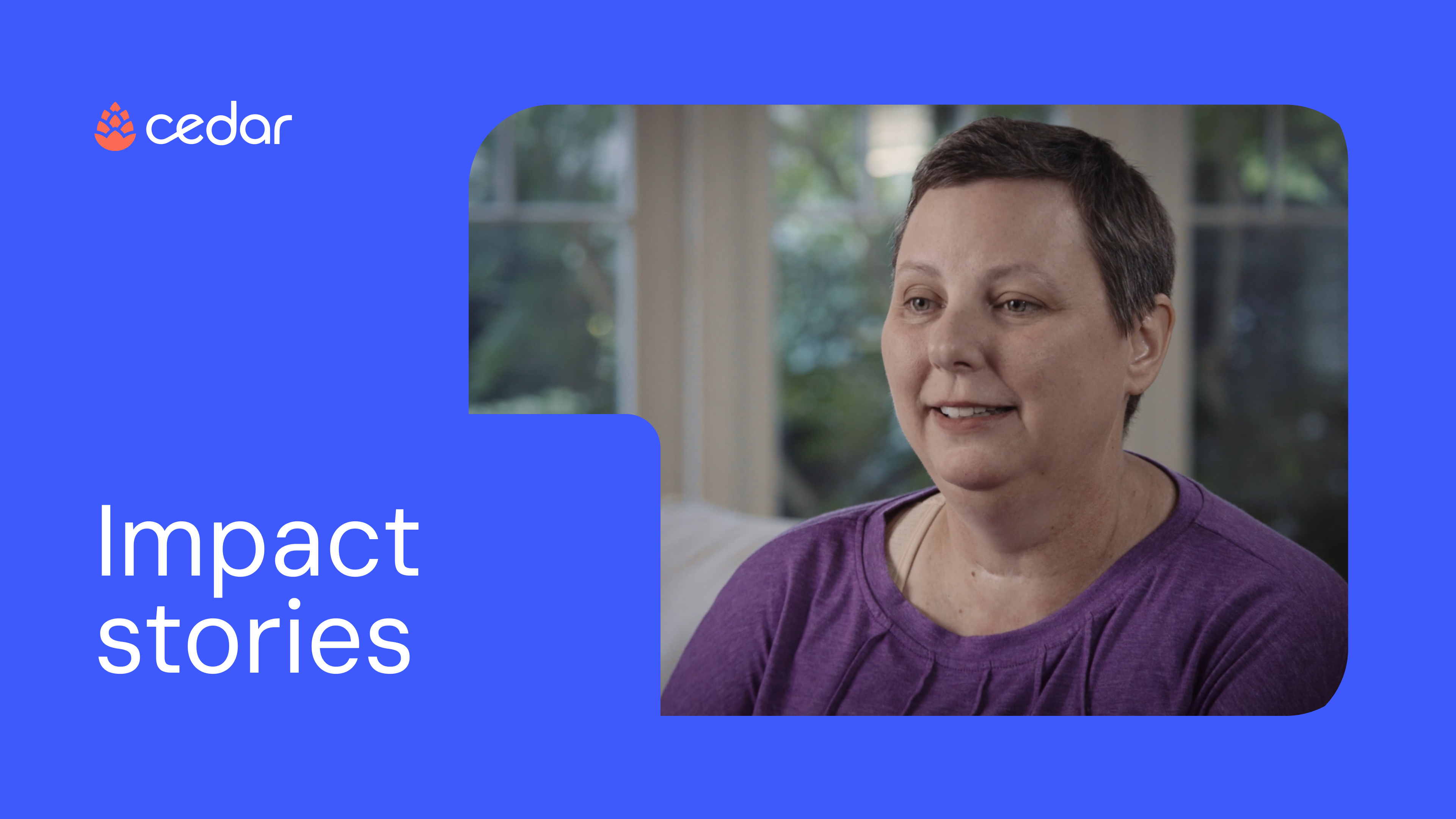“I decided that bankruptcy would just be better.”
A woman dressed in scrubs told me that, taking the call from the driver’s seat of her car, presumably during a break between shifts. She had recently given birth to a baby boy, and there had been complications. Like so many others, her medical bills piled up quickly—forcing impossible choices that no new parent should have to make.
“It was either keep the electric on and keep the baby in diapers and pay the premiums for the medical insurance or not even make it,” she explained, hands gesturing with each enumerated expense.
At the time, she and her husband were working full-time—she logged sixty to seventy hours a week, he worked fifty. They were doing everything “right:” insured, responsible, hardworking. And yet, bankruptcy seemed like the only escape. “You can move past that… it’s just money.” Especially when weighed against precious time lost with a newborn.
Her words stuck with me. How could this be the best option for someone so motivated to do right by their care providers? And as I heard more stories like hers, I started to question an assumption we had about patients who didn’t pay their medical bills.
Rethinking why patients don’t pay
When Cedar first started, we had a hypothesis: many patients (especially Millennials) simply didn’t want to pay their medical bills. It was the healthcare equivalent of “dine and dash”—patients receiving care with no intention of covering their portion of the cost. But as we conducted more patient research and dug into the data, we realized how wrong that assumption was.
The people struggling most with medical bills often weren’t ducking responsibility—they were actually engaged and proactive. Unlike higher-income patients who could glance at a bill and pay it without question, these individuals carefully scrutinized every line item: “Is this charge in line with what I’ve been charged before for the same service?” They compared costs across providers, requested itemized statements, and attempted to negotiate payment plans that fit within impossibly tight budgets.
These patients were clearly motivated, and trying incredibly hard. They just didn’t have any financial slack. And I kept wondering—what do you even call someone like this?
Then, last summer, I stumbled across the term “ALICE”—and suddenly, everything clicked.
Meet ALICE, the invisible third
ALICE stands for Asset Limited, Income Constrained, Employed. United Way coined the term to describe households that earn above the Federal Poverty Level but not enough to make ends meet. And they aren’t exceptions—they make up nearly a third of American households and have been growing twice as fast as all others since 2010.
For this population, healthcare access and affordability is a moving target. They’re not always uninsured, but they’re frequently underinsured. One month they qualify for ACA marketplace subsidies, the next they don’t. Too “well-off” for public assistance programs like Medicaid, ALICE is often making trade-offs between their care and other essentials.

Importantly, ALICE isn’t a monolithic group: they come in all shapes and sizes.
“We see young households, older households, all different races and ethnicities,” says Stephanie Hoopes, PhD, National Director at United for ALICE, United Way of Northern New Jersey. “This is a systemic issue where the jobs are not paying enough to cover the basic costs.”
What’s more, ALICE is close to us and we interact with them in our everyday lives. Getting a coffee, dropping our kids off at daycare, receiving a delivery, going to the bank—so much of what we need to keep our economy running smoothly is dependent on ALICE.
Given the prevalence of ALICE, the fluidity of their financial situations, and the diversity across the population, there is real impetus for providers to rethink financial assistance strategies. These insights are shaping how we design our affordability solutions—but first, we need to get to know the people behind the acronym and the different challenges they face.
One event can change everything
For us at Cedar, this meant synthesizing years of conversations—real patient stories from user research, product testing, and other interactions. We spoke with people struggling in medical debt, oncology patients navigating years of treatment, new parents facing impossible trade-offs. And after revisiting these stories, we had a simple but powerful realization:
What if financial hardship isn’t who people are, but something that happens to them?
That shifted our perspective. It wasn’t just about income brackets or insurance status—those were snapshots, not explanations. The real story was the turning points that sent people from stability into crisis.
A medical emergency. A cut in work hours. The sudden responsibility of caregiving. A birthday that meant aging out of a parent’s insurance plan. Even a divorce.
For ALICE, financial strain isn’t an identity—it’s a moment. And when we looked at enough of these moments, we saw something bigger than anecdotes. We saw patterns. That’s where archetypes come in.
Archetypes show us how to support
We found that ALICE patients facing financial hardship tend to fall into distinct categories—archetypes shaped by what triggered their struggle and how it impacts their finances. These aren’t rigid boxes; people can move between them, sometimes experiencing more than one at a time. But understanding these archetypes helps providers meet patients where they are, with the right kind of support at the right moment.

Putting archetypes into practice
Theory is helpful, but seeing archetypes in real healthcare settings makes their value clear. Consider the Treatment Drained patient:
Situation
For Treatment Drained patients, financial hardship cascades through medical events over time. A cancer diagnosis or chronic condition doesn’t just bring initial hospital bills—it triggers a long-term cycle of specialist visits, treatments, and medications. Then come all those expenses nobody warns about: parking fees for frequent appointments, clothing that accommodates medical devices like chemotherapy ports, home modifications, and convenience meals when cooking becomes impossible.
Intervention
This is where healthcare providers can make a meaningful difference. By identifying a patient with a new serious diagnosis early, providers can take immediate action before financial toxicity sets in. Analyzing procedure codes and prescription data on claims opens opportunities to connect patients with manufacturer assistance programs for high-cost drugs, disease-specific foundation grants, and pharmaceutical copay cards—resources that are often out of sight and out of reach.
“Even with the HMO, the financial aid program was the only thing that really saved me.”
A real oncology patient managing medical bills
Implementation
Supporting Treatment Drained patients isn’t just about having resources—it’s about connecting them at the right moments:
- Finding critical moments: The diagnosis conversation. The transition from inpatient to outpatient care. The point when treatment extends beyond initial expectations. These are the windows where financial intervention has the greatest impact.
- Equipping your team: Front desk staff, nurses, and call center agents need clear indicators to recognize when someone is becoming Treatment Drained. Sometimes it’s as simple as noticing patterns in conversations or knowing what phrases signal growing financial stress.
- Simplifying the process: Most patients navigating serious illness lack the bandwidth to research complex assistance programs. Consolidating resources and creating clear pathways isn’t just convenient—it’s essential when cognitive and emotional resources are already stretched thin.
- Scaling with technology: The right tools can extend personalized support beyond what manual processes allow, ensuring consistent outreach throughout lengthy treatment journeys when patient financial vulnerability often increases.
Designing a better system for ALICE
That new mother I spoke with, the one who declared bankruptcy over medical bills, offered some good advice: “Work with people.”
Those simple words capture what’s often missing in our current approach to medical financial assistance. We’ve built systems around binary classification and sliding income scales, but we’ve forgotten that behind every unpaid bill is a human being experiencing a moment of vulnerability—often triggered by events beyond their control.
As we continue building solutions for ALICE and the various archetypes, we keep one clear goal in mind: it should be just as easy for someone to climb out of financial hardship as it is to fall into it. We need to design for the messy, unpredictable financial realities people actually live—not the idealized patient with stable coverage and perfectly timed bills.
People working sixty-hour weeks shouldn’t have to choose between going to the doctor and keeping the lights on. They shouldn’t face a system that views their struggles as a moral failing. Instead, by seeing financial hardship as temporary rather than defining, providers can create pathways where patients move through difficulty rather than becoming trapped by it. That’s not charity—it’s good business and basic decency. And it’s what it really means to work with people.
Jaya Birch-Desai is Director of Research at Cedar




